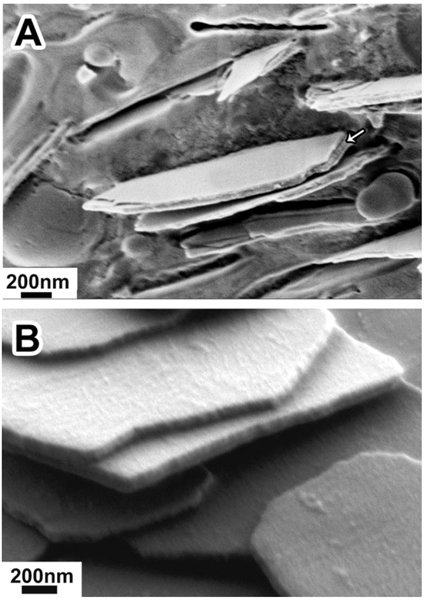Why do fish scales have about 30 crystals in a stack, while the spiders' stacks contain a much smaller number of plates?

How do the fish acquire their shiny scales? This question has been preoccupying scientists for hundreds of years. In the middle of the 17th century, the British scientist Robert Hooke was among the first to try to decipher the composition of the outer layer of the tail bug - a silver-gray insect. By the 60s, scientists were able to discover the substance responsible for the metallic color: guanine, which is also one of the components of DNA.
Only with the advent of advanced instrumentation, which allows materials to be viewed at extremely high resolution levels, did scientists begin to understand how the structures made of guanine - which are colorless in themselves - are able to create such colorful effects.
Recently, Dr. Avital Levy-Lior, Prof. Steven Weiner and Prof. Leah Addi from the Department of Structural Biology, together with Dr. Eyal Shimoni from the Department of Chemical Research Infrastructures, all from the Faculty of Chemistry at the Weizmann Institute of Science, used a number of advanced microscopic methods to examine nanostructures of guanine in fish scales and spiders.
"Guanine is the only nucleic acid that often appears outside the DNA strands, and the crystals it forms are found in several species of animals, and are mainly used to control light rays," says Prof. Weiner. "It can be found in the skin, scales, and sometimes also in the eyes of animals."
Guanine crystals, when they grow undirected, form thick clumps. The scientists tested several types of spiders – based on information they received from Dr. Jeff Oxford of the University of York, UK – that contain such guanine clumps in their tissues. The color of these spiders is not silver, but dull white. In contrast, the guanine crystals found in fish scales and silvery spiders form flat, thin plates that reflect sunlight strongly and in one direction. When the panels are arranged in a stack on top of each other, the light reflected from the different layers collides with the incoming light rays, which causes the shimmering effect.

Prof. Weiner: "The special cells in which the guanine crystals are formed must control their growth so that they develop in the right way and in the right direction, and also arrange themselves in the right structure of stacks. The cells do this using separate vesicles for each crystal."
The researchers found that the guanine plates in fish and spiders are similar in size and thickness. In addition to their ability to reflect light, the spaces between the panels and their directions also determine the degree of radiance of the final product. In both creatures, the plates are arranged in stacks: fish scales have about 30 crystals in a stack, while the spiders' stacks contain a much smaller number of plates. It turns out that the spiders compensate for the deficiency by means of sandwich-like structures, in which a "filling" of non-crystalline guanine is found between two crystalline guanine plates. Together with Dr. Dan Oron and Osip Schwartz, from the Department of Physics of Complex Systems, the scientists calculated the degree of light reflection expected from each of the structures, and came to the conclusion that the fish and spiders achieve approximately the same level of light reflection.
Prof. Weiner: "It seems that both structures are equally effective. However, our findings show that the fish and spiders use slightly different mechanisms to control crystal growth. This fact suggests that although the two colors look similar to the eye, they have undergone separate evolutionary development. In fact, it can be assumed that the use of guanine crystals has evolved many times in different species."

5 תגובות
There is an advantage to reflecting the light because from the point of view of predators there is a mirror effect. If I'm not mistaken on marine predators whose vision is adapted to the conditions under water the effect works more than on us who are adapted to vision in an aerial medium.
Spiders are probably a different matter.
There are only a small number of silver spider species. I am not familiar with spiders and silver spider ecosystems, so I don't know why there are such spiders in the first place and what is the reason for them being silver.
to 2. Thanks Mr. Seter, but why do spiders have to sparkle?
The evolutionary advantage of the glittering scales in fish is that thanks to this they are camouflaged when viewed from above. Likewise, the bright, scale-free belly provides camouflage when looking at the fish from below.
It seems that for the fish the reflection of light and the glitter of the scales gives some kind of evolutionary advantage.
The question is, what is that advantage?
And maybe the advantage is not in the shine reflected from the scales but because the surface of the scales
Very smooth and thus reduce the friction with the water.
Whereas the shine resulting from the scaly surface layer is only a by-product of the surface
The parts.